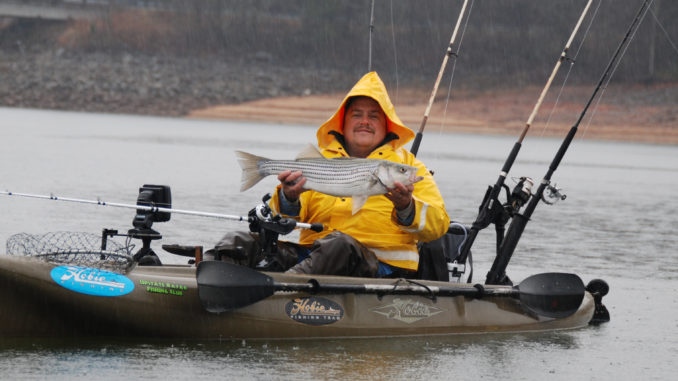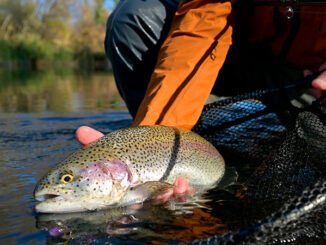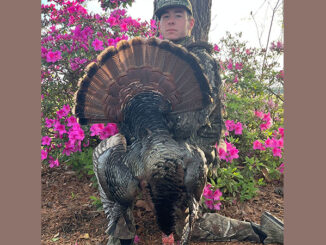
What do novice kayak anglers need to know?
A recent survey of kayak anglers by a popular manufacturer revealed some not-so-startling facts about a growing segment of the fishing community. At the top of the list was that the overwhelming majority of kayak anglers, even those who are leaders and innovators of the sport, have been involved in kayak fishing for less than 10 years.
Questions arise from every angler who steps up to a plastic boat with a fishing rod in one hand and a paddle in the other. With the holidays around the corner and a new fishing season right on their heels, these tips and suggestions should help the rising freshman class of 2016 get its feet wet, figuratively speaking, in a fishing kayak.
What boat should I buy?
Kayaks come in two flavors: sit-on-tops and cockpit boats. Very few anglers are happy fishing from a cockpit-style boat. Sit-on-tops allow more freedom of movement and have scuppers to let water that will and does get in the boat drain out.
A one-piece, roto-molded boat is generally better than a two-piece seamed boat because eventually, the seam will leak. It is better to buy a good used boat than a bad new boat. Holes or wear spots in a good used boat can be repaired less expensively than buying a new, high-dollar boat.
Don’t buy the biggest and best new kayak on the market when starting out. If you start with a good, entry level, used boat and like the sport, you will want to go better — meaning pricier — in your next boat. Kayak anglers are always swapping out boats.
If you don’t like the sport, a good used boat is easier to get your money back out of.
What can/should I fish for?
Everything that swims, saltwater and fresh. Obviously in the Carolinas, that probably means inshore saltwater and flat or slow-moving freshwater. But the bluewater isn’t out of the question, especially for anglers along North Carolina’s coast.
You can catch 6-ounce panfish or 200-pound sharks, maybe larger, from a kayak once you know what you are doing. Learn to fish for multiple species because fishing for just one is boring, and you’ll do poorly in your local kayak club’s Angler of the Year standings if you only target one fish.
What do I wear while kayak fishing?
Plan on falling in the water every time you fish from a kayak. You won’t, but if and when you do, you’ll be dressed for the occasion. Wear clothing that doesn’t hold moisture; that means all cotton, especially if the combined air and water temperature is less than 120 degrees. If it’s cold or even cool, an outer layer that sheds water is recommended.
Wear your life preserver every time. With today’s inflatables, there’s no excuse not to. Don’t forget waterproof footwear.
Where can I fish from a kayak?
Any public water that is accessible is fair game. Private water with permission is also good. Public access at rivers, creeks and streams is also good because a kayak is more portable than other boats. More public water is accessible by kayak than a trailered powerboat, but bear in mind that your range in a kayak is limited to your physical endurance. A mile in any direction is a good rule of thumb starting out. Eventually, that range may extend to 5 to 7 miles, round trip, or 15-plus miles on a one-way float in moving water.
Keep abreast of river stages and tide phases anytime you paddle moving water. Schedule your fishing trips to go with the flow, then come back with the flow.
What’s the best way to transport my boat?
Most beginners start out car-topping or transporting their boat in the bed of a pickup truck. Car/truck racks come in handy, and when you accumulate too much gear to haul down to the water a load at a time, you’ll buy a kayak trailer or re-purpose an old powerboat trailer.
What should I take?
Plan your trips with a specific fish/pattern, maybe two, in mind. You don’t have a lot of room for extra tackle and gear to catch everything in one trip.
Keep extra clothes, phone, safety gear, first aid, food and plenty of water stored in water-tight containers below deck.
What are the hazards of kayak fishing?
Drowning is No. 1. Powerboats that don’t see you in the middle of the lake or waterway and run over you and your boat can lead to No. 1. Wear visible clothing, outfit your boats with hi-vis flags, always use a 360-degree visible white light with at least 36 inches of elevation when fishing at night, and always assume the person driving the powerboat won’t see you.
Strong currents, wind, fog, lightning and the occasional shady characters who sometimes frequent remote boat ramps all require the same amount of caution and preparation when fishing from a kayak as a power-boating angler.
Where can I learn more about kayak fishing?
Join a club. The Carolinas have numerous kayak fishing clubs supported by other kayak anglers who will take you and teach you where and how to fish from a kayak. Remember, your job is to learn how to kayak fish so you can cultivate your own fishing spots, not return at every given opportunity to the spot you were shown and fish it out.





Be the first to comment